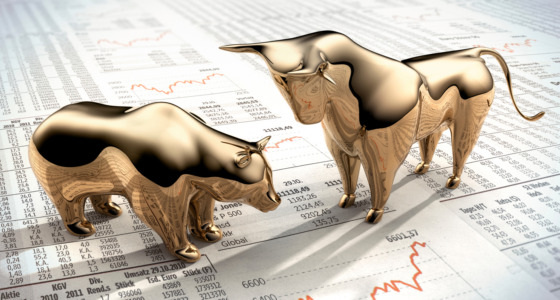

Our brains have several cognitive biases that our brains naturally use to influence our thinking. In fact, over 180 different biases and heuristics can interfere with how we make decisions. The phrase “trading is 20% strategy and 80% psychology” has its roots in these cognitive biases that can play havoc with your equity curve.
Today, we’re going to look at some of the most common biases that can affect your trading.
What are cognitive biases?
In short, cognitive biases lead us to misinterpret reality. They are subconscious patterns that short circuit logical thinking and affect almost everyone. They usually stem from our brain’s built-in survival instincts.
For example, have you ever seen an ad for a heavily discounted product, say $1000, down to $250, then realized that the product isn’t even worth $250? This is the anchoring bias, which marketers exploit to get us to believe that the item is cheap when really, we wouldn’t buy it if it was originally priced at $250.
Confirmation bias
Confirmation bias is one of the most common biases in trading. It’s the tendency to see information as supporting our hypothesis, even if, objectively, it conflicts.
Let’s say you’re bearish on an asset, so you enter short. When price starts moving back up, you are much more likely to convince yourself that you’re looking at a pullback rather than a continuation of a long-term trend.
Ever been in a losing trade and started looking at indicators or timeframes you usually avoid? This is confirmation bias at work.
Bandwagon bias
Bandwagon bias is one of the leading causes of FOMO. When we see others jumping on a trend, we assume they must have something right. Effectively, we evaluate what others believe as true, as surely everyone can’t be wrong, right?
Sometimes these bets pay off. However, more often than not, someone sees everyone else jumping on the bandwagon, so they get on. This compounds and repeats the effect, leading to herd mentality.

Recency bias
Recency bias is relatively self-explanatory. It causes us to favor new information over old and oversee more important aspects. For example, if an asset pumps +10% in one day, we might think, “great, a breakout is occurring!” but forget that it’s been in a massive downtrend for the past few years.
Conservatism bias
Conservatism bias is the opposite of recency bias. It’s the tendency to favor old information over new, like not buying a stock based on poor past performance, despite a new CEO and positive earnings.
Note that the two aren’t mutually exclusive. You can be conservatively biased on one asset and recently biased on another. The most important thing is to recognize the bias.
Loss aversion/Zero-risk bias
These are two different biases that are closely related. Loss aversion has us placing greater emphasis on losses and behaviors that avoid them. It explains why we lose more satisfaction from losing $100 than gain if we win $100.
Zero-risk bias is the tendency to mitigate the risk of loss to as close to 0% as possible, even when there might be alternatives that offer better risk reduction. While both are conducive to good risk management, they can lead us not to take good trades or move a stop to breakeven before it makes logical sense to do so.
Gambler’s fallacy
The gambler’s fallacy is the notion that an event is more or less likely to occur based on historical events when the probability is actually unchanged.
For example, if a roulette wheel has been black four times in a row, one might erroneously believe that the next will be red. In actual fact, there is nothing to say that the ball can’t keep landing on black another 30 times; the probability hasn’t changed.
We see this in the markets when a trader believes that a trend can’t continue because it’s been going on for so long. This is typically when confirmation bias comes in, and the trader begins examining all kinds of indicators to convince themself they’re right.
Sunk cost fallacy
The sunk cost fallacy describes our tendency to stay in a trade or even add to it when losing, whether or not it makes sense to stay in the trade. Because we see our loss as irrecoverable, we figure we might as well stick it out to the end and “get our money’s worth.” Ever got 45 minutes into a lousy movie and stuck it out? This is why.








